The arrival of spring and warm weather signals the time of year when many animals are awakening from their winter slumbers, while others may be facing a food shortage. But no matter the season, squirrels, raccoons, opossums, and other animals that don’t hibernate will all be looking for a quick nutritious meal and will be taking advantage of bird feeders filled with seed.
Many of these critters are quite smart and adept at figuring out how to access the contents of almost any feeder. Unfortunately, those feeders may be damaged in wildlife’s quest for a meal! These tips will also be useful to the many bird enthusiasts living in warmer climates that enjoy feeding the birds.

Location is key
Placement of bird feeders is key in keeping unwanted wildlife from eating the birds’ seed and from possibly damaging the bird feeder. In general, it is recommended to allow for at least 18 in/47 cm of clearance around the feeder. The feeder should be located away from structures (houses, fences, trees, etc.) so squirrels, raccoons, and other wildlife are not provided an easy jumping point onto the feeder. Place the feeder with its bottom at a minimum of 4-6 feet above the ground so it is more difficult for them to jump onto the feeder from the ground. Protecting the feeder with a baffle above or below the feeder (or both) is also helpful to deter climbing wildlife from accessing the feeders.

Squirrel proof bird feeders
To offer up even more protection for your bird feeders, consider choosing one that is specifically made with features to resist squirrel activity. Squirrel proof bird feeders can come in several different styles and types, including hopper feeders and tube feeders. The best squirrel proof bird feeders have multiple squirrel-stopping features, like weight activated seed covers, collapsing perches, and locking roofs. Be sure to choose one that is sturdy and durable. Materials like powder coated metal and break-resistant tubes are ideal, since squirrels are known for damaging traditional wood or plastic feeders as they attempt to reach the seed inside.
Seed selection
Safflower seed could be used in place of sunflower and mixed seeds. Many birds like safflower seed, but other wildlife such as deer and squirrels consider the seed to be a bit bitter and leave it alone.
Another way to make seed unappealing to mammals is to offer feed treated with hot chili powder or flakes. Because birds do not have developed salivary glands/taste buds, the ‘heat’ will not bother them. Typically, mammals, including deer and bear, do not like the heat and will leave the spicy seed alone.

Peace offerings
One may also choose to feed the squirrels and other wildlife by placing a feeder or simple tray with corn or sunflower seeds near the woods or a separate designated location away from the bird feeders. Try using a platform bird feeder filled with a wildlife seed and nut mix, or hang a corn feeder from a tree with tasty corn cob inside. Many bird enthusiasts are successful with luring wildlife to that location and keeping those unwanted critters off of the feeders intended for the birds.

Tidy up
Birds can be quite messy when feeding, especially those who only want the sunflower seed and cast the other seeds onto the ground. (Think blue jay searching for that peanut in the mixed seed!) Ground feeding birds are not able to clean up all the seed that has been tossed on the ground, leaving a mess behind. This seed not only attracts wildlife such as deer, raccoon, skunk, and opossum, but also rodents such as chipmunks and mice. To limit the buildup of excess on the ground under feeders, feed only as much as the birds will eat before nightfall or be prepared to tidy up under the feeders. Another option is to not feed mixed seed; instead offer the individual seed in separate feeders. This will help limit the seed cast to the ground by birds picking out only their favorite seeds.
Disappearing act
Much wildlife such as deer, raccoon, skunk, and opossum forage at night. While you may have placed your feeder(s) high enough to keep the smaller wildlife from jumping onto them, deer and bear are great at reaching up and pulling the feeders down - frequently damaging the feeder and the hanging system (high-line or shepherd's hook). The most effective way to deter this night-time snacking is to take the feeders inside at night. Unfortunately, bear and deer frequently feed in the daytime. For everyone's safety, the feeders should be taken in for a few days in these instances until the wildlife move on. When there is no free meal, it's amazing how the wildlife will stop coming around!

Many times, those who enjoy feeding the birds need to use a combination of these suggestions to keep unwanted wildlife from visiting their bird feeders. Be patient! You may need to try several tactics before you have success keeping the squirrels and other wildlife away.








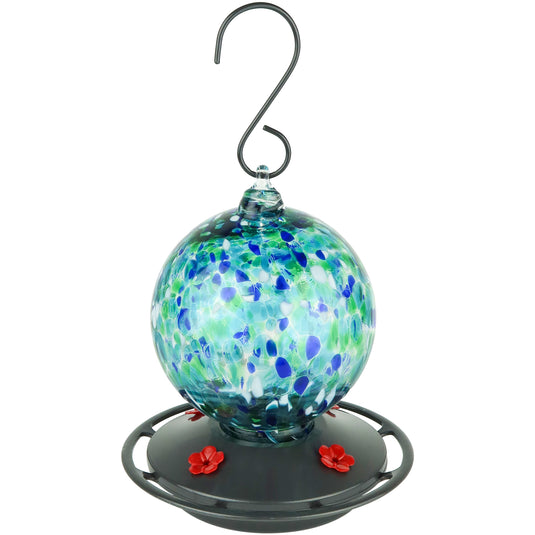






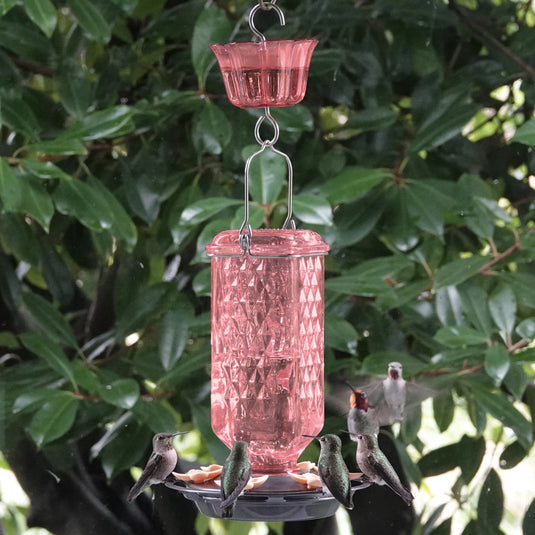
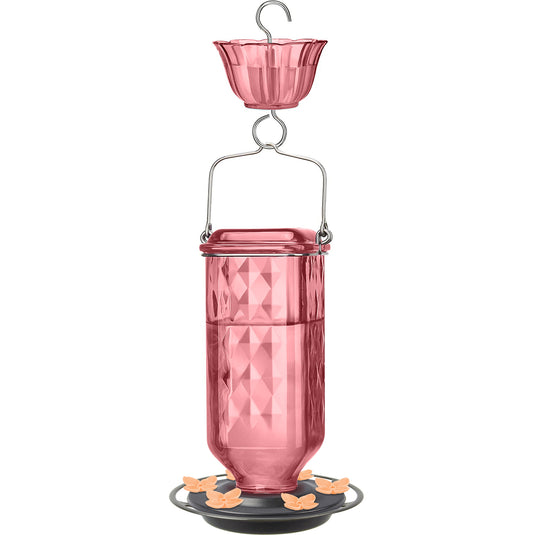


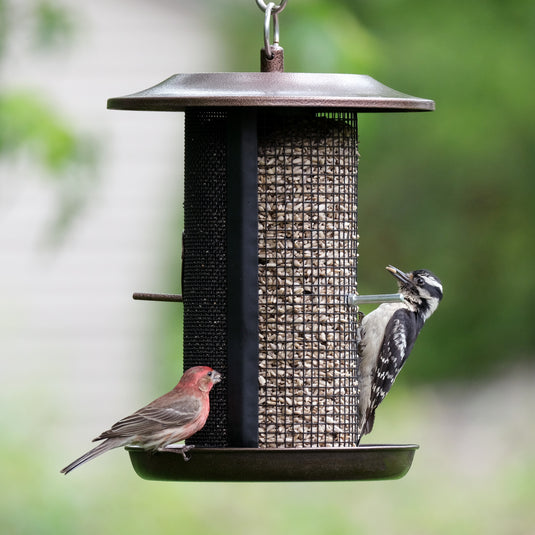



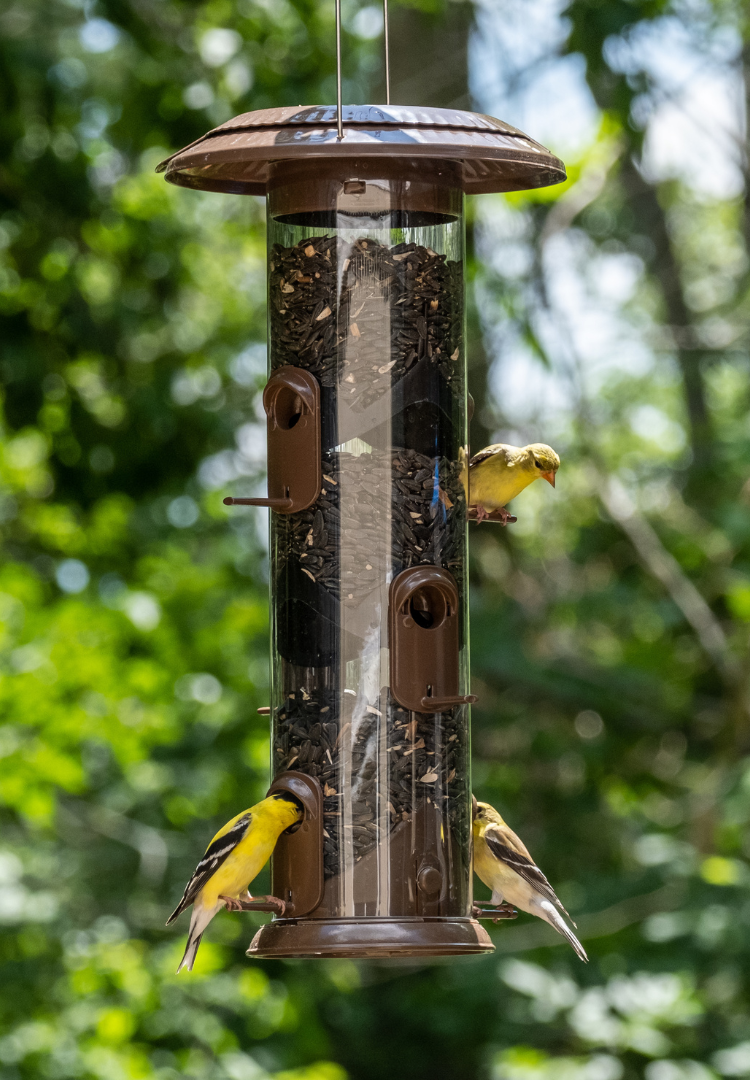
Thanks, to was very helpful!
Hi Carol! Thank you for sharing your tip and happy squirrel-free birding!
I don’t have bear or deer but tons of squirrels and a lot of trees. I hang my feeders from tree limbs with 80 pound test fishing line. Just tie a weight to the line and toss it over the branch and attach the feeder. No need to climb the tree or a ladder. The line is much too thin for a critter to climb down. They sit below and look up wishfully!!
Hi Bea! You are correct that some animals don’t prefer safflower seed. This being said, l would still caution you from putting your feeder where it is very accessible to critters. Squirrels aren’t the only pests out there so, depending on your location, you might still be providing a tasty meal to others in your area. Of course, it is completely up to you where you place your feeder so it might even be that you could do a trial run in your preferred location and move it if necessary. All the best!
I purchased the safflower seed and use that only, The birds eat it but the squirrels ignore it. So, am I safe to leave my feeder hanging from my fence as I can’t get on high places to place it.